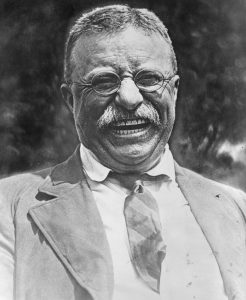Communication Breakdown In a Global Market
“If it was easy, everyone would be doing it.” I’m not talking about NBA basketball. I’m talking about the challenges of communicating with customers who don’t speak English. Or Millennials trying to talk about Medicare with someone 40 years older.
In this article on Target Marketing, Daniel Burstein, describes this problem on many levels. He’s not joking about the challenges of language and cultural differences. Daniel warns against using humor at all. This always sound advice when it comes to public speaking. Most people won’t get the joke. Others will be offended. The rest will be laughing and texting it to an associate.
Get Your Marketing Team Fluent in Your Customers’ Language
Perhaps your ideal customer speaks English and your marketing team does, as well.
Or you have an international customer base and your marketing team has English and Spanish speakers in the Americas, but French, German, Dutch and Hebrew in EMEA — then Mandarin and Korean in APAC.
So you think you have this language thing covered. Far from it. Getting translations right for an international audience is only the beginning. Your marketing team must also be fluent in the customer’s trade language, mental levers and word preferences — all lingua francas that exceed national boundaries.
…
For marketing leaders, the first step is being aware of the role language can play in subconsciously signaling to your customers that your brand and solution are a right fit for them.
The next step is increasing your marketing team’s “fluency.” This can be especially challenging when members of your team are in a significantly different demographic than your ideal customers (for example, Millennials marketing Medicare, which is unintentionally alliterative) or come from a different industry (marketing is marketing, but B2C luxury property marketing is a different language than B2B enterprise software sales, a lesson I learned early in my career).
Read the rest of the article here:
Language challenges come with marketing opportunities. Master the language differences and your global customers will thank you for it. Of course, if you run a local business in Los Angeles, you may have customers speaking a dozen languages.
Just remember the K.I.S.S. principle: Keep It Simple Shopkeeper. It means you have less to translate and lessons the risk of offending someone.
Marketing Simplicity Means Less Is More
Everyone suffers from information overload today. Just click on one banner ad and a person is followed all over the internet for weeks. Companies bombard clients with the same message everywhere. This can be on their website, Instagram, Facebook, Twitter and more. This “be everywhere” marketing strategy can overwhelm clients and prospects and lead to marketing fatigue. Or simply a lot of unsubscribes and unfollows. This strategy is also a lot of work for you or your staff by trying to post everywhere.
You can learn more about this topic in this article written of Michael Crawford of Target Marketing, The Value of Marketing Simplicy in a Complex World.
How many times have you heard, “the average consumer is exposed to ‘X’ number of ads each day?”
The cliché often accompanies a pitch for a creative platform or placement intended to stand out in a crowd. In competitive markets, this mindset can drive growth in marketing budgets, as people become preoccupied with share-of-voice metrics and prestige placements. That’s why it’s worth remembering the subtext of the cliché is simplicity.
It’s true that consumers are inundated with commercial messages in more forums and formats than ever. Stimulating demand in a saturated advertising environment requires reasonable frequency. More importantly, however, it requires messaging based on your audience’s motivations and interests, simplified for each stage in the awareness-to-conversion process.
You can read the rest of the article here.
https://www.targetmarketingmag.com/post/the-value-of-marketing-simplicity-in-a-complex-world/
With this strategy in mind, you focus on mastering one or two marketing channels. Then add more marketing channels as time and funds allow. You should carefully track your ad campaigns to know which ones increase sales and which ones just cause marketing clutter.
What Is GDPR and Why It Matters For Marketers
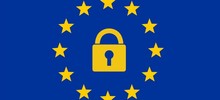
Facebook is the advertising platform that marketers love to hate. We love it because we can target specific groups of people with a level of knowledge which boggles the minds of old-school direct marketers. We hate it because we know Facebook is tracking us and our children and knows way too much about us. To put it bluntly we want privacy for ourselves but not our target prospects. GDPR stands for General Data Protection Regulation. These European Union’s privacy regulations go into effect on May 25, 2018. European residents will get more privacy online and European businesses will face major fines for not protecting their clients and prospects privacy.
Mark Zuckerberg faced congressional committees in March over the Facebook user data getting out in the wild by their former partner Cambridge Analytics. At the time, Zuckerberg welcomed regulation. In Europe, however, he removed 1.5 billion users’ data from European to avoid the GDPR regulations for non-European users.
No GDPR Protections For 1.5 Billion Facebook Users
Some fancy footwork by Facebook saves the day for US advertisers.
Marketers may not know that they almost saw reduced ad options. If Facebook hadn’t been able to access all of its data on 1.5 billion international users outside of the U.S. and the E.U., advertisers may have seen major changes in their data availability and possibly on their marketing results beginning on May 25. As it is, they’ll likely see such changes with E.U. citizens.
You may find this strategy works for your company as well. Or you could just deliver GDPR-level privacy to all your customers and prospects. You can learn more about GDPR and how to get compliant in this timely article from Target Marketing.
A Guide To GDPR Compliance For Marketers: What Is GDPR and How to Avoid Fines
GDPR regulators are going to want to know that the data brands have on private EU citizens came from those consumers opting in to become customers and selected their preferences regarding how they wanted their data to be used. Marketers will need to obtain this consent before using customer data. EU citizens also have a right to be erased from databases.
So lists are a huge caution.
“We marketers don’t own customer data — we borrow it,” Nance says. “Customers trust us with it and expect that we use it to provide them with personalized and relevant content that engages and delivers interesting products they may purchase. But one too many brands have exploited their customers’ data, selling email lists; opting customers in for dozens of email communications; and not providing safeguards for consumers to opt out. Simply put, companies should not be marketing to consumers who haven’t given them their consent.”
I encourage you to read the rest of this article even if all your customers and prospects are from the US. You may face similar regulation in the future.
How Looming Privacy Regulations May Strengthen Facebook and Google
The New York Times reported that these new regulations may actually strengthen Google and Facebook against future competitors. We’ll see.
Giovanni Buttarelli, the European data protection supervisor who was involved in the creation of privacy rules, said much of the impact would be determined by regulators who enact the law and who will be up against well-funded teams of lobbyists and lawyers. Google and Facebook will be overseen by the Irish data authority because their European headquarters are in Ireland. Mr. Buttarelli noted that Europe had staff of about 2,500 across all the countries working on the issue.
“That’s peanuts compared to the lobbyists in Brussels and Strasbourg,” he said, referring to the cities where the European Commission and Parliament operate.
He said large technology companies had advantages but would also be under a microscope. Enforcement of the law is skewed to companies that handle the most personal data.
“There are pros and cons to being a tech giant,” he said. “We want to treat small and medium-sized businesses differently.”
https://www.nytimes.com/2018/04/23/technology/privacy-regulation-facebook-google.html
Chargebacks: A Business Problem You’d Best Care About
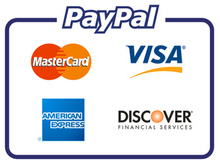
In this article by copywriting great John Forde, you’ll learn ten ways to minimize getting chargebacks from dissatisfied customers.
In early 1974, nobody wanted to use credit cards. And this, my friend, would have been a problem if it had never changed.
Mercifully, however, it did.
Today, we’ve got plastic galore. And lots of other ways to pay that are credit-card adjacent, like Apple Pay, Paypal, and so on.
It sure makes our jobs easier, yes? Anything, after all, that streamlines the sale can’t help but be good for selling.
What you might not know, though, is how you owe a lot of that good fortune – and today, a big problem – to a big change that arrived that very same year.
It’s called the “chargeback.”
This, in case you’re unaware, is the regulatory beast that lets customers contest charges by calling up their credit card company to say “I didn’t buy that.”
This was huge. Suddenly, all or most fear of deceptive merchants, surprise charges, and the rest evaporated… and the use of credit cards skyrocketed into the mainstream.
Here’s the thing…
Decades later, it’s gotten so easy to contest charges, it’s perhaps TOO easy. Even for merchants who try to run an honest business.
And yes, as a copywriter, it’s something you have to care about. Because in ways you’re about to see, you might be part of the problem. But you can also be part of the solution.
See, part of the reason chargebacks are a growing business problem is that they’re now so much easier to initiate.
Customers can go to their credit card website and click a button. It’s a kind of “lazy man’s refund” policy. No customer service to call. No question of when you’ll get charges reversed.
Just instant protection.
On the seller’s side, however, it’s no small thing. It’s not just the sale that gets canceled. There’s the risk of losing money on products you’ve already shipped. There’s also the risk of banking your business on sales you thought were completed.
And then this – you might actually lose your merchant account as punishment from the credit card company if your rate of chargebacks runs too high. And “high” is a pretty low percentage of overall sales, maybe 2% or so of orders.
And it doesn’t stop there.
Processing chargebacks involve fees. They might also involve lost shipping and handling costs. Plus, costs for restocking. On average, US merchants can get hit with about 206 chargebacks per month. And every $100 in chargebacks can eventually cost the merchant $240 total. Of course, it’s not so bad for some but worse for others.
So what’s that got to do with you, if you’re “only the copywriter?” It turns out, plenty. Check out this list below. It includes 10 possible ways to cut down chargebacks. And it could make you a hero with clients. Here we go…
1) MAKE YOURSELF “KNOWN” – According to the folks over at PayPal, one of the biggest reasons customers initiate a chargeback is because they just to recognize your company on the bill. Be very, very clear about who you are when you deliver your products or show up on the bill. Try creating a very descriptive URL that will show up on bills and in your welcome letter.
2) MAKE YOURSELF WELCOME – Speaking of welcome letters, have one. Have a series of them, in an auto-responder “here’s how to get started series. Try having a quick start-up report or CD or DVD or webpage full of welcome videos too. On high ticket items, try sending a snail mail welcome letter too. Plus, a gift that guilts them into sticking around. Or even a promise of a future gift, which they’ll get “when it’s ready.” That way, you also leverage anticipation.
3) FEATURES, NOT JUST BENEFITS – We all know that selling is about putting the benefits out front. But there’s one place you want to emphasize features — that is, what the customer will get, much more — and that’s in the close. Or at least, on the order form. Spell it explicitly, so nobody is confused or feels jilted by what they receive, both of which are also frequently the cause of credit card chargebacks.
4) BE VERY EASY TO REACH – How infuriating is it when you buy something, want to know about something you want to buy, or whatever… and the company you’re trying to reach makes has a “Contact Us” page that’s more impenetrable and unwelcoming than Fort Knox? Yes, exactly. So don’t be that client. And make sure your client isn’t that client either. Be easy to reach for questions, complaints, or comments. Contact forms, phone numbers, or — my favorite — live customer chat.
5) BE QUICK TO RESPOND – Speaking of customer service, there’s a story about how Jeff Bezos tested customer hold times on the phone. In a big meeting, he asked how fast those times were and an exec replied, with no proof, they were less than a minute. So Bezos dialed in to test the claim, using the conference room speakerphone. Four and a half agonizing minutes later, a customer service rep picked up. The exec resigned shortly after. Guess what customers do when they can’t get through. That’s right, they cancel orders.
6) CHECK THE WAY YOU TAKE CARDS – If your order form doesn’t ask for that little code on the back of the credit card, require it. And, per Forbes, review other ways to step up card authorization too. Adding the Visa Account Updater, for instance, will automatically update cardholder info and cut back on authorization declines. Asking for a delivery address can help, though that’s not going to make as much sense on a digitally delivered product.
7) NO HIDDEN CHARGES – It’s fine to charge a monthly fee. It’s fine to charge shipping and handling. It’s fine to charge service fees, restocking fees, and all the rest. Even if all of those might be slightly off-putting. Because you might find they just make for good business. However, it’s NOT fine if you’re not completely and actively upfront about those charges existing. As a copywriter, that goes for us too… hiding the charges will only come back to bite us in the end.
8) DON’T KEEP THEM WAITING – In the age of Amazon, FedEx, and even overnight postal packages, the days of “six to eight weeks” are pretty much over. If you or a client take someone’s money, make sure they get what they’ve ordered ASAP. Lots of chargebacks happen in that dead zone of “where the $@#%& is my order!”
9) MAKE PROMISES YOU INTEND TO KEEP – This is otherwise known as “sell good stuff” and sell it honestly. We all know, yes, that promise is the soul of persuasion. But here too, if you’re trying to promise the moon but only intend to deliver moon pies… you’ll eventually pay for that too. Unhappy customers cancel charges at a greater rate. They go tell friends to cancel them too.
What’s the number one way to avoid chargebacks? I personally know some folks who won’t like this last suggestion, because they balk at the idea of creating a nebulous future obligation, but…
10) OFFER REFUNDS AND GUARANTEES – Yep, this is highly controversial. Some say offer the biggest, most generous refund policy you can stomach. Others say that’s reckless, like creating a black cloud of future obligations and uncertainty. But in the end, guarantees do easy buyer anxiety. And well-written, they can protect the customer’s butt too.
This last one, of course, is worthy of in-depth coverage all its own. Maybe in a future issue. Maybe even in the next issue. We’ll see, until then, see you next week!
P.S. There are so many other anti-chargeback tips I could mention. But let’s just go with a link like this one:
52 Tips to Reduce Chargebacks from the Experts | Soarpay.com
For more copywriting and business advice (and get $78 in free gifts), sign up for John Forde’s Copywriters Roundtable. http://copywritersroundtable.com
Yes, Great Marketing CAN be Rocket Science. Just ask Elon Musk.

Normally marketing is not rocket science. John E. Kennedy defined advertising as “salesmanship in print,” not rocketship in space.
However, Elon Musk used the test launch of SpaceX heavy launch rocket to promote one of his other companies, Tesla. The payload of this “half a billion dollar” experiment was his cherry red Tesla roadster. Elon Musk and Tesla gots tens of millions of dollars of free advertising yesterday. This was in addition to the free advertising received by SpaceX. Of course, the rocket could have blown up on the launch pad or in the sky. Yet it didn’t so we all witnessed a technological and marketing home run yesterday.
You can read about this heavy lift rocket here:
http://www.spacex.com/falcon-heavy
Did you notice the unique selling proposition (USP) for the rocket?
The World’s Most Powerful Rocket
Now click the SpaceX logo in the upper left to go to the home page. Watch the slider and you’ll SpaceX’ company USP:
Making Life Multiplanetary
The company describes itself this way:
SpaceX designs, manufactures and launches advanced rockets and spacecraft
No one can accuse Elon Musk as lacking vision either:
“You want to wake up in the morning and think the future is going to be great – and that’s what being a spacefaring civilization is all about. It’s about believing in the future and thinking that the future will be better than the past. And I can’t think of anything more exciting than going out there and being among the stars.”
— Elon Musk, CEO and Lead Designer, SpaceX
In case you missed it, here is the launch of this amazing rocketship. Enjoy.
Walmart Name Change Shows Online/Offline Worlds Merge
Walmart changed its name from Wal-Mart Stores, Inc. to Walmart Inc. I read about it on Walmart’s blog. Yes, Walmart has a blog. Does your business have a blog?
In the old days, you could divide companies between online and bricks and mortar businesses. E-commerce meant a company sold products and services online from their website or a platform like Ebay or Amazon. Bricks and mortar businesses sold from a physical location. Today, Amazon owns Whole Foods and rumors abound about Amazon buying Target Stores next.
Here are some excerpts from the article:
We’re Updating Our Legal Name to Reflect How Customers Want to Shop – Here’s Why
Notice that Walmart dropped the comma before Inc. Same as Apple when it changed its name from Apple Computer, Inc. to Apple Inc.
Most of us, and I’d guess all our customers, refer to our company as Walmart and still will. Changing our corporate name from Wal-Mart Stores, Inc., to Walmart Inc. is just a symbol of how customers are shopping us today and how they’ll increasingly shop us in the future. Whether it’s in our stores, on our sites, with our apps, by using their voice or whatever comes next, there is just one Walmart as far as our customers are concerned. When they shop with us, they expect it to be an easy and seamless experience.
Good move to include Sam Walton in this announcement. I wonder who came up with the idea of adding the dash.
Changing our corporate name to Walmart is a way of better reflecting our company’s path to win the future of retail. It’s also a bit about returning to the company’s roots. You might be surprised to learn that, when Sam Walton opened the first store in 1962, the name on the front of the building was simply, “Walmart.” A few years later, we incorporated as Wal-Mart, Inc., and amended the name to Wal-Mart Stores, Inc., when we went public in 1970.
Walmart is a huge organization. Imagine the amount of work required to change the name of the company.
We began with great stores and steadily expanded to include clubs and distribution centers. In 1991, we became a global retailer when we opened our first international location in Mexico City, and we launched Walmart.com in 2000. Today we operate under almost 60 different banners around the world, including eCommerce sites, and have more than 11,600 stores and clubs in 28 countries.
Like every blog which allows comments, you can leave positive and negative comments on Walmart’s blog. You can read them and the rest of the article here:
The online and offline worlds are coming together for Walmart for the benefit of its customers and shareholders. Their name change signifies a game change happening across the economy. All businesses will be affected over time including yours. This is the new normal for commerce. Get started now before your clients expect it.
Apple’s MacBook Air Revolutionized Laptop Design 10 Years Ago Today
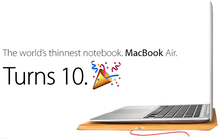
On January 15, 2008, Steve Jobs announced the MacBook Air computer to an enthusiastic crowd. He described the MBA as “The world’s thinnest notebook. MacBook Air.” Along with taking away weight and thickness, the computer also did away with an optical drive and many ports. Apple looked ahead to a wireless world which people looked to the cloud for software, movies, music, and file storage.
Watch this advertisement from 2008 which introduced the world to the MacBook Air.
https://www.youtube.com/watch?v=E98Eyl5Et0w&’?rel=0′
Later, Apple added an 11.6″ MacBook Air with faster processors, more RAM, and bigger SSD drives. I am typing on mine now. I rarely use the screen or keyboard because I use a 32″ external monitor and wireless keyboard and trackpad. Yet I can carry this mini-powerhouse computer between home office and work office and take everything with me.
I recently found some old briefcases in my garage which I’d used to carry my laptop computers over the past 25 years. They are HUGE and heavier than my MacBook Air today. I donated them to my local gospel rescue mission. Someone will find a use for them. And one more thing…
Happy Birthday MacBook Air!
You can learn a lot about how to turn negatives, i.e. no optical disk, into positives by watching Steve Job’s MacBook Air product announcement presentation. He always worked very hard on his presentations to make them appear effortless and be very conversational. In this one, he set the stage by saying nice things about Sony’s current notebook yet saying that Apple can do better. He told why it’s better and then he proved it.
You can read more about this revolutionary computer at MacRumors.com.
Today marks the tenth anniversary of the late Steve Jobs unveiling the MacBook Air, the world’s thinnest notebook at the time.
After introducing the AirPort Time Capsule and sharing some iPhone and Apple TV news, Jobs walked over to his podium, grabbed a manilla envelope, and pulled out the sleek MacBook Air. The crowd at Macworld erupted with applause as Jobs held the ultra-light notebook in the palm of his hand.
The thinness came at a cost. The base model ran $1,799 for a 1.6GHz Intel Core 2 Duo processor, 2GB of RAM, and an 80GB hard drive. A maxed out version was also available for $3,098, around $300 more than the base Mac Pro at the time, with a faster 1.8GHz processor and a 64GB solid-state drive.
Go to MacRumors to read the rest of this article.
Convert What You Know Into Income
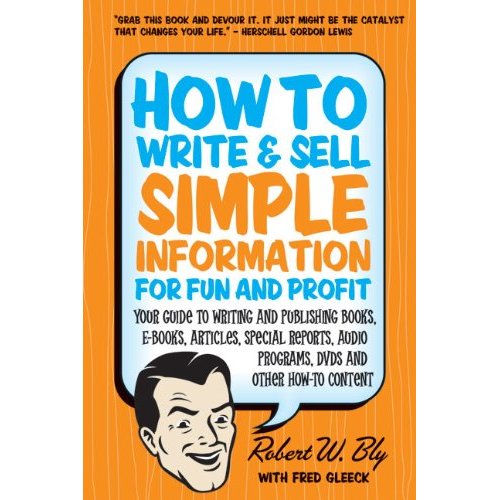
In this article by author and master marketer Bob Bly, you’ll learn about how you can convert your specialized business knowledge into a side income. I have learned a lot from Bob Bly over the years and hope you make him one of your “virtual mentors.”
There’s a lot of money in teaching the business, tasks, and skills you have mastered … and the information you have researched, learned, and produced … to others who seek them.
Collectively this is the knowledge business, or as I like to call it, “the college of knowledge” — packaging your knowledge as products and services to sell for a price.
Including: ebooks … newsletters … special reports … books … online courses … webinars … seminars … college courses … conferences … boot camps … coaching … consulting … DVDs … audio CD albums … training … membership sites … Facebook groups … the list goes on and on.
So, how is it that a “knowledge business” even exists? What makes it possible?
The key to it all a simple principle George Clason wrote about in his book The Richest Man in Babylon:
“That which one man knows can be taught to others.”
That’s the premise — proven since the dawn of humankind — on which today’s knowledge business is based.
Now, some who want to get into the knowledge business protest, “But I am just ordinary; I don’t know anything others will pay for.”
This is almost never the case.
As my colleague Dr. Gary North warns: “The great mistake of most small business people is to imagine that their detailed knowledge of their niche market is widely dispersed.
“On the contrary, hardly anyone knows it. They are owners of a capital asset that others do not possess and have no easy way of possessing it.”
And will therefore pay handsomely to obtain.
Another objection I hear is: “Well, I know something about topic X. But I am not the world’s leading expert. So how can I presume to teach others?”
Info marketing guru Fred Gleeck astutely notes:
“You don’t have to know more about your topic than anyone else in the world. You just have to know more than 90% of the people in the world.”
And either you do now … or can get to that level with some work on your part.
Widely quoted research shows it only takes 1,000 hours to be competent at something. And it requires 10,000 hours of practice and study to become a master of it.
Also, if you know the subject and how to teach it to others, you are a better source of knowledge transfer than other experts who perhaps know more than you — but are lousy teachers, as so many are.
The next objection is: “There is so much information available for free on my topic already on the internet, why would anyone pay me for the same information they can already get on the web at no cost?”
Here’s the thing: What is widely available online is just data and information.
But in the knowledge business, we don’t merely sell data and information … although, both are usually part of our offerings.
What sets us apart is that our paid info products and services provide:
Data we have collected through long effort that others in fact do not have.Deep knowledge gleaned from our data and long experience.
Analysis of the data and knowledge to show what it means and how our customers can benefit from it.
Actionable ideas tested and proven to enable those using them to achieve the desired results.
Wisdom to understand what will work in a field, what won’t, and to consistently know the difference.
In other words, mere data and information are often free for the asking.
But actionable ideas on how people can use it for their gain are in short supply … and again, people will pay you handsomely to get this knowledge.
One more fact about the knowledge business:
If you gain a wide base and become a recognized authority in your field, people will pay a premium for your knowledge.
If you don’t, they are less likely to do so.
Also, it doesn’t take a huge audience to make a good living in the knowledge business.
If you build a list of just 10,000 fans and each spends only $100 a year with you, your gross annual income is a million dollars.
Not too shabby.
Sincerely,
Bob Bly
Copywriter / Consultant
31 Cheyenne Dr.
Montville, NJ 07045
Phone 973-263-0562
Fax 973-263-0613
www.bly.com
How To Put Your USP To Work
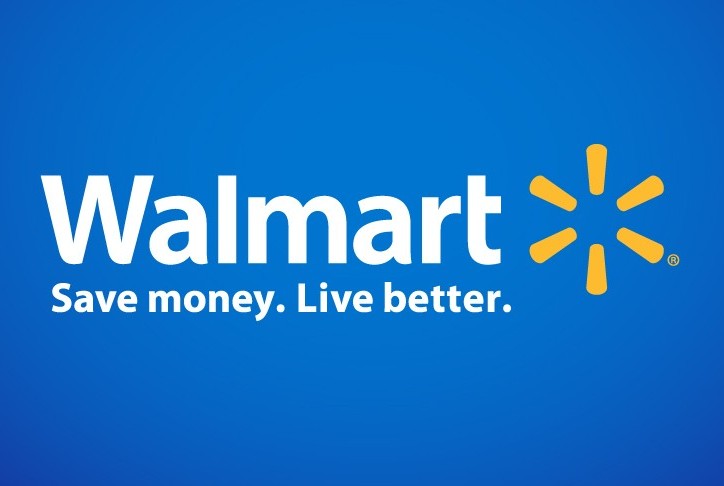
In a recent post we spoke about creating a USP or “unique selling proposition.” Your USP answers the question of why someone should do business with you rather than with a competitor or just do it themselves. Your USP sets you apart from your competitors. Walmart’s USP reminds its customers that they are saving money and improving their quality of life by shopping at Walmart. You need to put your USP to work to grow your business. Your goal is to put your USP in all your marketing materials and in every communication piece your clients see. Let’s list some easy ways:
- Your website banner. Change your header graphic and every page of your website will be updated.
- Your website articles. Update your bio page, qualifications page, etc. to emphasize what makes you different.
- Your invoices and statements. Maybe you can put in the footer or the cover page of the statement.
- Your business proposals. You want your USP to appear near your picture.
- Your answering machine message: “Thank you for calling John Smith & Associates, where we help you make money and retire better. How may I help you?
- Your email signature block
- Your fax cover sheet
- Add it to your byline in articles you write.
- Add it to introductions when you speak in public
- Display advertisements.
- Press releases
Other places may wait until you need to reprint:
- Your business cards.
- Your practice brochures.
- Your letterhead. Consider adding your USP to the bottom of your signature block until you reprint.
- Your checks. You never know if one of your vendors needs a financial advisor.
- Your yellow page ads
- Your billboards. Unlikely I know but what about the sign on the front of your office?
- Your employee memos
The last one might seem odd at first glance but really it’s critical. Imagine if one of your employees was asked, “What makes your boss different from all the other financial advisors out there?” What would she say? Imagine, a Fed Ex employee being asked in 1978, “Why should I pay ten bucks to mail a letter?” “I don’t know” would be the wrong answer! All your employees should know what makes you different and better and be able to explain why you’re the best choice. You need to ensure that you can deliver on your promise so your employees must be trained to deliver on your USP. Proverbs 29:18 states, “Where there is no vision, the people perish.” Use your USP training to get your employees jazzed up on how you aim high and want to over deliver on your promises. 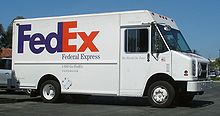
Remember that you can update your marketing materials over time. And when your business changes, you’ll need to update your USP to match. Be glad you don’t have a fleet of 30,000 trucks to repaint every time you update your USP!
Oval Office Carpet Copywriting Misquote: Teddy Roosevelt
While on his latest vacation in Martha’s Vineyard, President Obama had the Oval Office redecorated to reflect both his aesthetic as well as philosophical taste. His new beige carpet has quotes from 5 major historical figures. One is attributed to Teddy Roosevelt:
“THE WELFARE OF EACH OF US IS DEPENDENT FUNDAMENTALLY ON THE WELFARE OF ALL OF US” – From a speech Teddy Roosevelt gave at the New York State Fair in Syracuse, N.Y., on Sept. 7, 1903.
Over a hundred years ago, John E. Kennedy observed that “copywriting is salesmanship in print.” Every ad is made up of copywriting (the words for the headline, body, and offer) and graphic design (font type and size, pictures, colors, etc.)
I’ll leave the aesthetic critiques of the makeover to others. Let’s ask one question: Did this quote really help sell President Obama’s product? The product can be ObamaCare, Banker Bailout, Automaker Bailout, Green Energy Subsidies, etc.
Or was the quote taken out of context which reversed its meaning?
Thankfully, author Susan Shelley took the time to read Teddy Roosevelt’s entire speech. Her conclusion was that a lot more of the speech should have been printed on the carpet. I suggest that would make the “advertisement” less effective. Perhaps he should have quoted a former president who did so much to expand socialized medicine for people over 65 years old: President George W. Bush. Perhaps not.
Let’s take a look at some of Susan Shelly’s article and see how the quote was taken out of context. I bolded a few choice quotes which might be used for future White House renovation projects.
A reasonable person might interpret this selection as an indication of President Obama’s core belief that the president’s job is to “spread the wealth around.” He is unafraid and undaunted, the quotations suggest, in his quest to bring moral justice to “the people.”
Unfortunately, a rug has only so much space, and President Obama had to cut somewhere. Therefore, as a service to you, the reader, America Wants To Know looked up Theodore Roosevelt’s speech at the New York State Fair in Syracuse, New York, on September 7, 1903, and we now present some of the quotations from that particular speech that are not on the rug:
“The failure in public and in private life thus to treat each man on his own merits, the recognition of this government as being either for the poor as such or for the rich as such, would prove fatal to our Republic, as such failure and such recognition have always proved fatal in the past to other republics. A healthy republican government must rest upon individuals, not upon classes or sections.”
“Class government, whether it be the government of a plutocracy or the government of a mob, is equally incompatible with the principles established in the days of Washington and perpetuated in the days of Lincoln.”
“Again and again in the republics of ancient Greece, in those of mediaeval Italy and mediaeval Flanders, this tendency was shown, and wherever the tendency became a habit it invariably and inevitably proved fatal to the state. In the final result it mattered not one whit whether the movement was in favor of one class or of another. The outcome was equally fatal, whether the country fell into the hands of a wealthy oligarchy which exploited the poor or whether it fell under the domination of a turbulent mob which plundered the rich.”
“The reason why our future is assured lies in the fact that our people are genuinely skilled in and fitted for self-government and therefore will spurn the leadership of those who seek to excite this ferocious and foolish class antagonism.”
“Fundamentally, the unscrupulous rich man who seeks to exploit and oppress those who are less well off is in spirit not opposed to, but identical with, the unscrupulous poor man who desires to plunder and oppress those who are better off.”
“There is no worse enemy of the wage-worker than the man who condones mob violence in any shape or who preaches class hatred; and surely the slightest acquaintance with our industrial history should teach even the most short-sighted that the times of most suffering for our people as a whole, the times when business is stagnant, and capital suffers from shrinkage and gets no return from its investments, are exactly the times of hardship, and want, and grim disaster among the poor.”
“Legislation to be permanently good for any class must also be good for the Nation as a whole, and legislation which does injustice to any class is certain to work harm to the Nation. Take our currency system for example. This Nation is on a gold basis. The treasury of the public is in excellent condition. Never before has the per capita of circulation been as large as it is this day; and this circulation, moreover, is of money every dollar of which is at par with gold. Now, our having this sound currency system is of benefit to banks, of course, but it is of infinitely more benefit to the people as a whole, because of the healthy effect on business conditions.”
Yes, Theodore Roosevelt was crediting the excellent condition of the public treasury to its adherence to the gold standard. Sound money is good for the American people because it’s good for business conditions. That’s what TR said.
That’s not on the rug.
When “business is stagnant and capital suffers from shrinkage and gets no return from its investments,” it means “grim disaster” for the poor.
That’s not on the rug, either.
Turns out TR had no use for the man who “preaches class hatred” and believed the nation would always “spurn the leadership” of those who stir up “foolish class antagonism.”
TR said the rich and poor must be judged as individuals and treated equally under the law. He warned that republics were just as much at risk from those who “plundered the rich” as from those who “exploited the poor.”
You can bet that’s not on the rug.
It turns out that Teddy Roosevelt’s state fair speech, on Labor Day, was not a call to “spread the wealth around,” but a warning that attacks on the rich would bring down the whole country.
In 1903, anarchy was a spreading and violent threat to governments around the world. It was the terrorism of its day. It wasn’t what it is now, just a bunch of black-clad college students clattering their spray-paint cans outside the G-7 meeting.
In Syracuse that day, TR was trying to explain to the working people at a Labor Day event that their fates were inextricably tied to the freedom and success of wealthy capitalists.
That’s what he meant when he said, “The welfare of each of us is dependent fundamentally on the welfare of all of us.”
Do you think it’s too late to return the rug?
Source: http://www.extremeink.com/awtk/2010/08/not-on-the-rug.html
I say Teddy Roosevelt is having a good laugh right now.
The moral to the story is to carefully check all the facts in any advertisement, flyer, brochure, website, or blog post. It could be worse: You have to live with a Yellow Page ad for entire year. President Obama can fix this mistake as soon as they can manufacture some new carpet.


